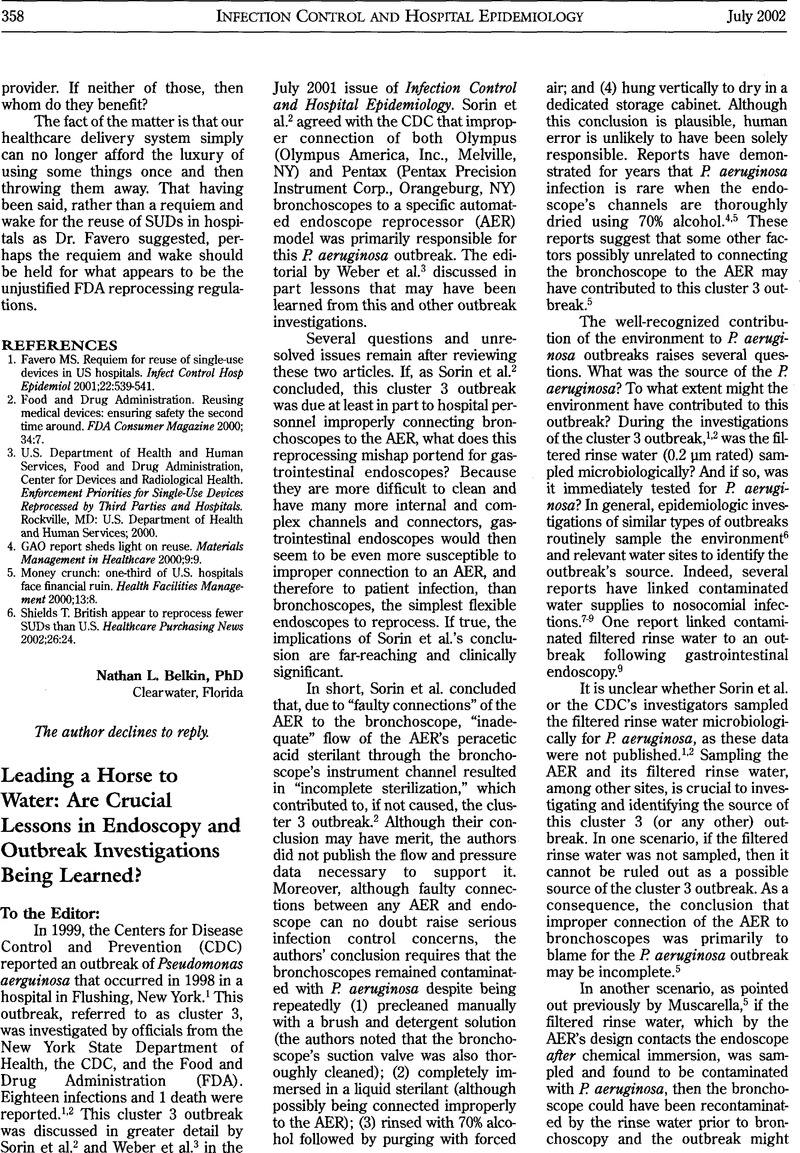Crossref Citations
This article has been cited by the following publications. This list is generated based on data provided by Crossref.
Greenwald, David A.
2003.
Colonoscopy.
p.
309.
Sciortino, C. V.
Xia, Eric L.
and
Mozee, Alberta
2004.
Assessment of a Novel Approach to Evaluate the Outcome of Endoscope Reprocessing.
Infection Control & Hospital Epidemiology,
Vol. 25,
Issue. 4,
p.
284.
Muscarella, Lawrence F.
2004.
Contribution of Tap Water and Environmental Surfaces to Nosocomial Transmission of Antibiotic-Resistant Pseudomonas aeruginosa.
Infection Control & Hospital Epidemiology,
Vol. 25,
Issue. 4,
p.
342.
Muscarella, Lawrence F
2004.
Infection control and its application to the administration of intravenous medications during gastrointestinal endoscopy.
American Journal of Infection Control,
Vol. 32,
Issue. 5,
p.
282.
Muscarella, Lawrence F
2006.
Inconsistencies in Endoscope-Reprocessing and Infection-Control Guidelines: The Importance of Endoscope Drying.
The American Journal of Gastroenterology,
Vol. 101,
Issue. 9,
p.
2147.
Muscarella, L.F.
2006.
Critique of a FDA-CDC public health advisory that discusses inadequate automated bronchoscope reprocessing.
Journal of Hospital Infection,
Vol. 64,
Issue. 2,
p.
191.
Lerouge, S.
2012.
Sterilisation of Biomaterials and Medical Devices.
p.
97.
Muscarella, Lawrence F.
2013.
Other Possible Causes of a Well-Publicized Outbreak of <i>Pseudomonas aeruginosa</i> Following Arthroscopy in Texas.
Advances in Infectious Diseases,
Vol. 03,
Issue. 02,
p.
134.
2022.
Sterile Processing of Pharmaceutical Products.
p.
267.



